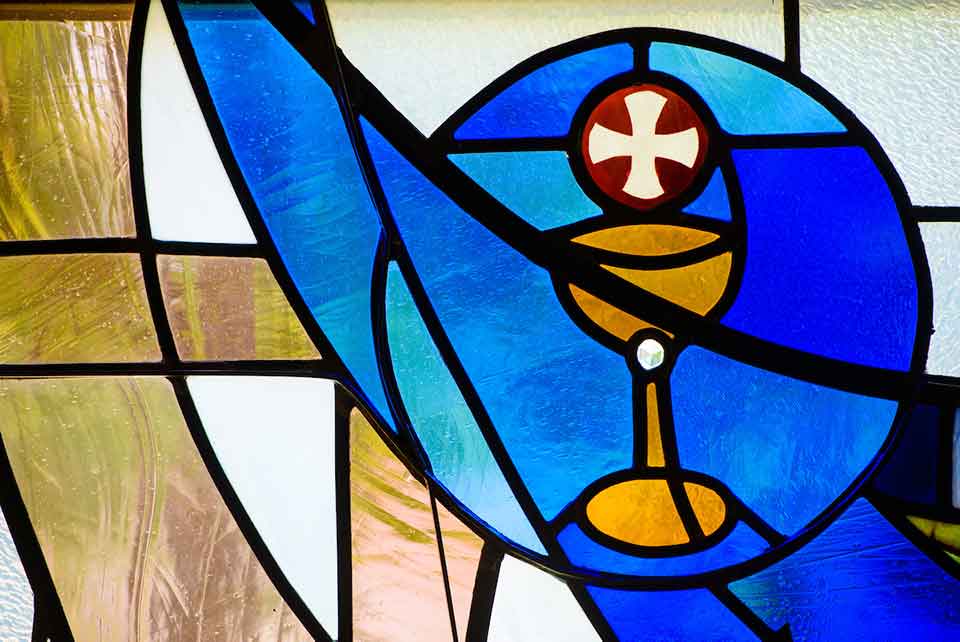Pastor's Portal
Receiving Communion
Rev. David Schmidt
May 1, 2021

It is an exciting time to be at Faith Lutheran Church as we anticipate the completion of our remodeled sanctuary. This raises the question: How does the design of the sanctuary help us to focus on the gifts God gives to us in worship?
The central point of the sanctuary is the chancel where the baptismal font, pulpit, and altar are located. Above the altar, there will be a large cross. That is the primary focus. It is through Jesus’ actions on the cross that we receive forgiveness of sins. That forgiveness is dispensed through baptism, spoken from the pulpit, and received physically as the Lord’s Supper, given at the altar. As I mentioned in an earlier article, we come to worship so that we may receive these means of grace.
When it comes to receiving communion, there are two common practices in our LCMS churches. During COVID-19, we distributed communion in stations. We walked up to receive the body and blood, then walked back to our seats in a continually moving line. There is nothing wrong with this, and it was necessary in order to socially distance, however it’s not the traditional method at Faith. Recently, we have gone back to the way we were receiving communion prior to COVID-19. We now go up in “tables” where we gather together as a community. The bread and wine are given to each person and then after everyone has communed, I dismiss the table with a blessing. I think there is great value in receiving the Lord’s Supper this way as it gives us time to reflect on what we are receiving in that moment. It also allows us to receive it together as the body of Christ.
This brings us back to the issue of sanctuary design. The majority of churches that practice communion by tables will have the congregation gather at a communion rail where they kneel to receive communion. Although it’s not a requirement, the communion rail allows the communicant to assume the posture of submission before God and a posture of reception. The presence of a communion rail doesn’t demand that someone kneel if they can’t physically do it, but it invites those who can, to do so. Think of kneeling for communion as being similar to standing in reverence for the reading of the gospel. There is no command to stand for the gospel reading, but when we stand, we are communicating that the reading of the gospel is special. Similarly, there is no command to kneel for communion, but there is a sense of humility and respect communicated as one kneels.
Let me be clear. If you do not kneel, are you still receiving communion? Absolutely! If a church doesn’t have a communion rail, can they still gather in tables to receive communion? Absolutely!
I bring this up because in the sanctuary remodeling plans there was talk of adding a communion rail. There are some members who desire that. However, it has not been the practice at Faith and there are some who have expressed concern about adding a communion rail.
Celebrating communion as a congregation is a wonderful way for us to unite around God’s gifts. I would never want to do anything that would create division on something that is meant to unify us. For that reason, I have recommended that the communion rial be tabled for now and that it could be something our congregation revisits at a later date.
This remodel is something we should all be excited about and come together to accomplish. I look forward to the day when we can receive God’s gifts in this new worship space.
